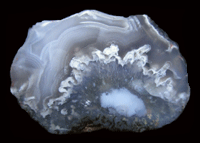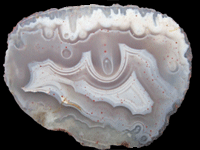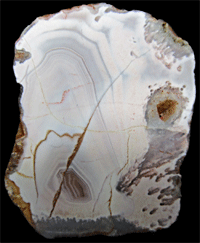
St Cyrus II
A little north of St Cyrus, there used to be a small fishing village named Miltonhaven.
Now all that remains are a few ruins, remnants of pottery and building materials in the sand and shingle, and a caravan park presumably named in honour of the vanished village. Tangleha', a small hamlet to the south was built to replace Miltonhaven, but never attained the previous town's popularity, or size.
So what happened to Miltonhaven? According to the story, a man from a wealthy family named Robert Scott moved to Miltonhaven, in order to build a lime kiln. The town was well suited because of its extensive natural seawall of limestone stretching across the bay. The limestone was quarried using explosives, and then heated in the lime kiln with layers of chalk and coke until calcination took place. The resultant quicklime was sold to be used in fertilizer, and perhaps also for other purposes. Robert Scott's kiln was built in the year 1750.
Apparently the town could be seen easily at night by the constant glow from the kiln, making it an attractive target for ships carrying illicit goods. It is said that lime workers who ended up in Miltonhaven became involved in the smuggling of tobacco to nearby Montrose.
The town became prosperous owing to the valuable quicklime, and the prolific smugglers and it is said many there lived in relative luxury, as regards most people of that time, drinking tea from China with sugar shipped from the West Indies, as well as brandy and gin from the Netherlands, Luxembourg and Belgium.
However, the sea-facing ridge of limestone that ran directly under the houses at the shorefront, had been worn to a slender remnant by over forty years of quarrying and during the 1790s the sea wore its way through, and the village was submerged by the tide.
Some say that the town was slowly washed away over time after a storm in 1792, which seems the most likely scenario to me. Others claim that the sea moved around 140 metres inshore one night in 1795!
In any case the town lies submerged around 100 metres from shore, in the direction indicated by the finger of limestone that extends from the shore close to the ruined Salmon Bothy just north of the beach at Tangleha'.












